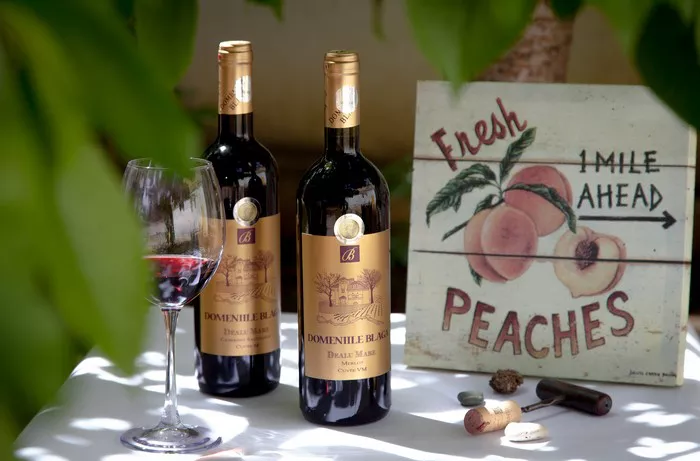Is Merlot considered cheap wine? This question has been a subject of debate among wine enthusiasts and novices alike. Merlot, a popular red wine grape variety, has garnered a mixed reputation over the years, with perceptions ranging from inexpensive to luxurious. In this article, we delve into the factors that contribute to Merlot’s reputation, exploring its historical context, production methods, regional variations, and consumer perceptions.
Historical Context: Merlot’s Evolution in the Market
To understand whether Merlot is considered cheap wine, it’s essential to examine its historical context. Merlot’s popularity surged in the 1990s, particularly in the United States, where it became one of the best-selling red wine varietals. During this period, Merlot was often associated with affordable, approachable wines suitable for everyday consumption. However, its reputation took a hit with the release of the 2004 film “Sideways,” in which the protagonist famously declared, “I am not drinking any [expletive] Merlot!” This line had a significant impact on Merlot sales and perception, leading some to believe that it was synonymous with cheap, low-quality wine.
Production Methods: Quality and Price Variations
The production methods employed in crafting Merlot wines play a crucial role in determining their quality and price. Like other wines, Merlot can be produced using various techniques, ranging from traditional methods to modern innovations. Factors such as grape selection, fermentation process, aging duration, and oak barrel usage all influence the final product’s flavor profile and cost.
Some Merlot wines are indeed crafted to be affordable and accessible to a wide range of consumers. These wines are often produced using bulk production methods, where grapes are harvested in large quantities and processed using cost-efficient techniques. As a result, they may lack the complexity and depth found in higher-priced Merlot wines. However, it’s important to note that not all inexpensive Merlot wines are synonymous with poor quality. Many reputable wineries produce budget-friendly Merlot offerings that deliver excellent value for money.
On the other end of the spectrum, there are premium Merlot wines that command higher prices due to their exceptional quality and craftsmanship. These wines are often made from grapes sourced from select vineyards, where meticulous attention is paid to every stage of the winemaking process. Premium Merlot wines may undergo longer fermentation periods, extended aging in oak barrels, and rigorous quality control measures to ensure superior flavor and texture. Consequently, they are priced higher to reflect the investment in time, labor, and resources required to produce them.
Regional Variations: Terroir and Prestige
Merlot’s reputation as cheap wine can also vary depending on its geographic origin. Different wine regions around the world cultivate Merlot grapes, each imparting unique characteristics to the final product. Bordeaux, France, is renowned for producing some of the world’s most prestigious Merlot-based wines, particularly in appellations such as Pomerol and Saint-Émilion. These wines, often referred to as “Right Bank” Bordeaux, command premium prices and are highly sought after by collectors and connoisseurs.
In contrast, regions outside of Bordeaux, such as California, Chile, and Italy, also produce Merlot wines of varying quality and price points. While some of these wines may be considered inexpensive, others strive for excellence and compete on the global stage. For instance, Napa Valley in California is known for producing high-end Merlot wines that rival those from Bordeaux in terms of quality and prestige. Similarly, regions like Tuscany in Italy and Maipo Valley in Chile have earned recognition for their premium Merlot offerings, further blurring the lines between cheap and high-end wines.
Consumer Perceptions: Breaking Stereotypes
The perception of Merlot as cheap wine is not solely determined by its production methods or regional origins but is also influenced by consumer attitudes and preferences. While some consumers may equate low price with low quality, others recognize that value can be found at every price point. Moreover, the stigma associated with Merlot following the release of “Sideways” has gradually diminished over time, as wine enthusiasts rediscover the varietal’s versatility and charm.
Today, many consumers appreciate Merlot for its smooth, fruit-forward character, making it an ideal choice for casual gatherings or everyday enjoyment. Affordable Merlot wines offer an accessible entry point for those new to wine tasting, allowing them to explore different styles and develop their palates without breaking the bank. At the same time, premium Merlot wines cater to discerning drinkers who seek complexity, elegance, and sophistication in their wine selections.
In conclusion, the question “Is Merlot considered cheap wine?” does not have a straightforward answer. While some Merlot wines may indeed be affordable and budget-friendly, others command premium prices and are prized for their exceptional quality and craftsmanship. Ultimately, the perception of Merlot as cheap or expensive depends on various factors, including production methods, regional variations, and consumer preferences. Regardless of price point, Merlot continues to captivate wine lovers around the world with its diverse range of flavors and styles, proving that quality and value can be found in every glass.
Conclusion: Redefining Merlot’s Reputation
In the realm of wine, perceptions are often shaped by a myriad of factors, from cultural influences to personal experiences. The question “Is Merlot considered cheap wine?” invites us to examine the complexities of this beloved varietal and challenge preconceived notions. While Merlot may have faced criticism in the past, its reputation is evolving, driven by innovation, craftsmanship, and a growing appreciation for its diversity.
Whether enjoyed as an everyday indulgence or savored as a special treat, Merlot offers something for everyone, transcending labels of cheapness or luxury. By exploring the rich tapestry of Merlot wines from around the world, we gain a deeper understanding of their nuances and complexities, reaffirming their place in the pantheon of great wines. So, the next time you raise a glass of Merlot, consider not just its price tag but the journey it represents—from vine to bottle, and from stereotype to sophistication. Cheers to Merlot, a wine that defies expectations and delights the senses with each sip.


